Astronomers measure the light from objects in space in different ways. The method or tool they use depends on the question they are trying to answer.
Explore some of the ways astronomers study light:
- 3 Colour Images
Have you ever seen colour pictures from space and wondered how they were made? Well, with The Schools' Observatory, you can make your own!
We make colour pictures by adding 3 images of the same object together. We use a different filter for each image, which sits in front of the telescope's camera. Usually, colour pictures are made from red, green and blue images. This makes colour images similar to what the human eye will see.
Image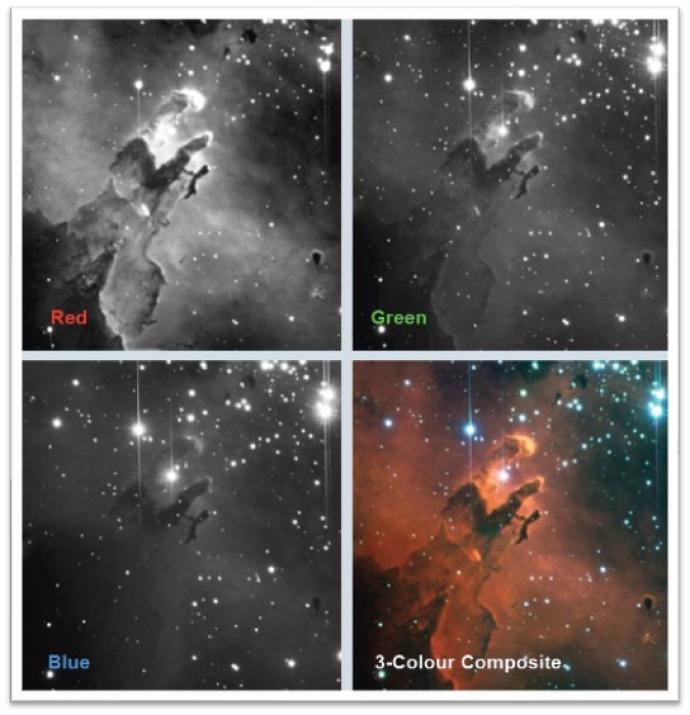 CreditThis work by A. Newsam/LT Project is licensed under All rights reserved
CreditThis work by A. Newsam/LT Project is licensed under All rights reservedSometimes, we can give colours to different types of light to see them more clearly - like making the X-ray light appear blue! These colour pictures can be made in many ways to highlight different features and make them look beautiful.
- Astrometry
Astrometry is the science of measuring objects' positions in the night sky. Before telescopes were invented, this was the only tool astronomers had.
Image CreditThis work by Adolf Stieler (1840) is licensed under Creative Commons Zero v1.0 Universal
CreditThis work by Adolf Stieler (1840) is licensed under Creative Commons Zero v1.0 UniversalCelestial map of the Northern Hemisphere The method uses lots of maths to work out where things are in space. There are special coordinate systems to define positions in the sky. These compare the positions of stars in the sky to things on Earth, like the North Pole and equator. Today, we also include how far from Earth the object is, making it 3D.
To do this, we need to measure angles very carefully. These angles are tiny. In space, we use arcminutes and arcseconds to measure angles rather than degrees. There are 60 arcminutes in 1 degree. And there are 60 arcseconds in 1 arcminute.
Thousands of years ago, people first mapped the planets and bright stars they could see in the night sky. As technology got better, millions more of stars were found inside our galaxy. Then, in the 1900s, we found other galaxies out in space. So today, maps of the night sky contain many more objects.
Image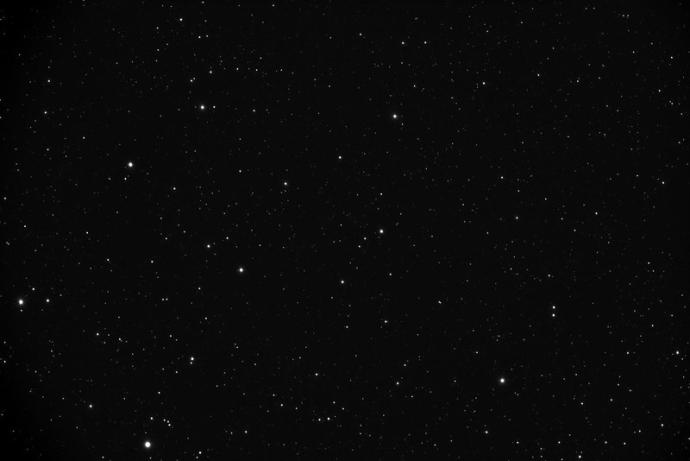 CreditThis work by Jörg Weingrill is licensed under Creative Commons Attribution 4.0 International
CreditThis work by Jörg Weingrill is licensed under Creative Commons Attribution 4.0 InternationalA star field Astrometry is used to follow objects in the sky and understand their motions. We can use it to see trails of stars from old galaxies that have fallen into larger ones. It can also help us work out the distances to far-away objects by comparing them to things that we know are close to us.
It has even helped us find planets going around other stars by seeing small wobbles in their position. This happens because the planet's gravity pulls on the star as it orbits around it.
It might seem simple to map positions, but it takes a lot of work to make accurate measurements in space. We have even launched satellites, like Gaia, to help. Gaia has mapped one billion stars inside the Milky Way, but this is still only 1 percent of the stars in our galaxy. It can see much fainter stars than telescopes on Earth, more than 4000 times fainter than we can see with the human eye.
- False Colour
Images from space give us a lot of information about how bright stars and other objects are. Often, there is more detail than the human eye can see. To show this detail, astronomers use software to display the image in many ways.
Most images from telescopes are black-and-white. One of the most useful things you can do is to change the picture's colours. This is called using false colours.
Image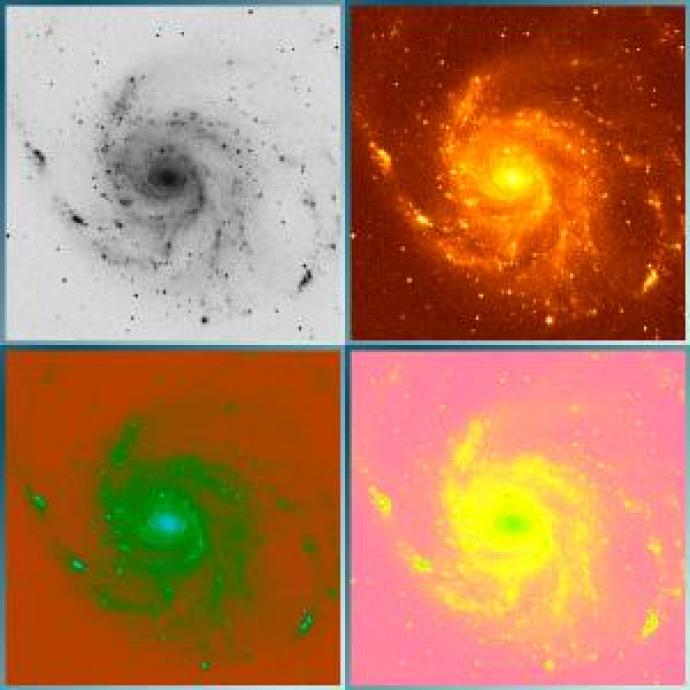 CreditThis work by The Schools' Observatory is licensed under All rights reserved
CreditThis work by The Schools' Observatory is licensed under All rights reservedFalse colour images of a galaxy The image itself is not changed in each false-color picture, just the colours displayed. This allows us to see more detail in the object.
- Interferometry
Tools called interferometers add together waves of light. When they do this, the light waves interact (or interfere) with each other. This adds the waves, making them brighter or cancelling them out. This only happens if the waves come from the same object or have the same frequency. We call these types of wave coherent.
Interferometers are useful in many areas of science, not just astronomy. They were first used in the 1800s to measure the speed of light in different directions. Today, they are used in telecoms, biology, medicine, and astronomy.
In astronomy, interferometers merge the light collected by more than one telescope. These act together as one bigger ‘virtual telescope'. As the waves are added together, they become brighter brighter, which makes it possible to see fainter objects in more detail.
Each telescope has a ‘resolving power’. This tells us how far 2 points must be from each other for the telescope to tell them apart. If they are any closer, the telescope will blur them together. Resolving power depends on the telescope's mirror size and the wavelength of light being looked at.
The light we can see with our eyes has a wavelength between 0.0004 - 0.0007 mm. But radio waves are thousands of times longer. This means a radio telescope with the same resolving power must be thousands of times bigger.
Building a single radio telescope thousands of metres across is impossible, so we use interferometry. Scientists and engineers make tens or hundreds of smaller radio telescopes, which create the resolving power of a much larger one.
Image CreditThis work by Mobilus In Mobili is licensed under Creative Commons Attribution Share Alike 4.0 International
CreditThis work by Mobilus In Mobili is licensed under Creative Commons Attribution Share Alike 4.0 InternationalVery Large Array in New Mexico There are downsides to interferometry. Because it is not a single dish, it acts like it has lots of ‘holes’ in its mirror. This means the image will be less bright than one made by a single telescope of the same size.
Interferometers are also very hard to design and build. The light from a single object reaches each part of the system at different times. If you just combined all the light, it would look like a jumbled mess. So, these systems have to work out the exact time when each part of the device received the light. Super-computers called ‘correlators’ keep track of all the signals and put the data back in sync. The telescopes must also be set out in patterns or arrays. They would miss too much information if they were in one straight line.
Many large telescopes today use interferometry, like the SKA radio telescope and the VLT optical telescope. They study the most extreme objects in the Universe and hunt for exoplanets. LIGO and LISA use laser interferometry to detect gravitational waves. LISA will be the first interferometer in space!
There is even a planet-sized interferometer called the Event Horizon Telescope (EHT). It links radio telescopes all across the Earth. In 2019, they used it to create the first ever image of a black hole.
Image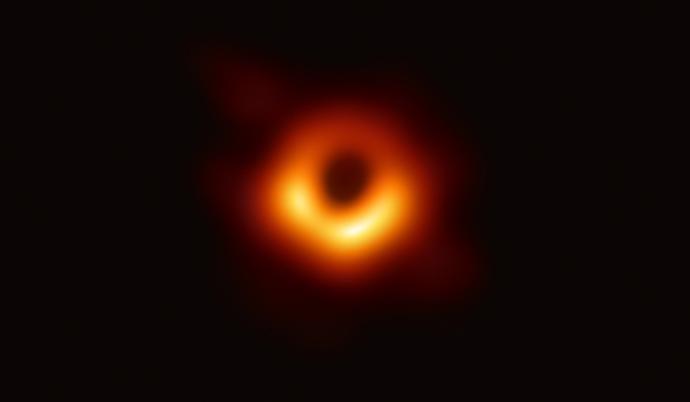 CreditThis work by EHT Collaboration/ESO is licensed under Creative Commons Zero v1.0 Universal
CreditThis work by EHT Collaboration/ESO is licensed under Creative Commons Zero v1.0 UniversalBlack Hole at the centre of Messier 87 - Photometry
Photometry is the science of measuring the amount of light received from a star. The word comes from the Greek 'photo', meaning light, and 'metron', to measure. Photometry measures the star's flux, the amount of energy from the star that has reached us here on Earth.
Photometry is good for looking for changes in brightness. We can see these changes over hours, days, or months and plot a graph of showing how they change with time. These graphs are called light curves.
If a star's light changes over time, it is called a variable star. Looking at patterns in light curves can help us find objects and learn more about them.
Image CreditThis work by RJHall is licensed under Creative Commons Attribution Share Alike 4.0 International
CreditThis work by RJHall is licensed under Creative Commons Attribution Share Alike 4.0 InternationalLight curve for a RR Lyrae variable (a type of variable star) We can use software to measure the brightness of different objects in an image. The value we measure is the intensity or 'counts'. This can be thought of as the number of photons, or packets of light, collected by the telescope.
To do this, we measure counts across a circle covering the star (known as an aperture) rather than at a single point. The circle must be the right size; too small, and we will not get all the light collected by the telescope. If it is too big, we might include light from other nearby objects not related to the star.
When we have taken measurements, we can use the information to compare stars.
- Polarimetry
Polarimetry measures the direction of light. The light coming from a star moves in random directions; we call this unpolarised. When light hits gas or dust in space, it is scattered, which can lead to polarisation (the direction of the photons of light all lining up). This can also happen if the light moves through strong magnetic fields.
We can put filters on telescopes that separate the direction of the light. These tools are called polarisers and only allow light pointing in a particular direction to pass through.
Image CreditThis work by Kaidor is licensed under Creative Commons Attribution Share Alike 4.0 International
CreditThis work by Kaidor is licensed under Creative Commons Attribution Share Alike 4.0 International1) Light source 2) Unpolarised light 3) Linear polariser 4) Linearly polarised light 5)Sample tube with molecules 6) Light is polarised due to molecules 7) Rotatable linear analyser 8) Detector Polarised lenses are often used in sunglasses, limiting the light passing through to the eyes.
In astronomy, it is used to look for exoplanets and at the centre pf galaxies. It can help us learn more the atmospheres of other planets. It can even be used to make maps of magnetic fields around black holes. However, because polarisers block out some light, this method is best for studying very bright objects.
- Spectroscopy
This involves splitting light into its different wavelengths. Astronomers refer to light as the whole electromagnetic spectrum.
Spectroscopy began with scientists using prisms to split light into a range of colours. Today, we use thin pieces of glass with cuts on the surface, known as diffraction gratings, rather than prisms. These can be placed into instruments on the telescope to split light into different wavelengths.
Spectroscopy has many uses in astronomy. It can be used to work out the colour of stars and classify them, helping us understand the age and history.
It can also be used to work out the elements in a star by looking at the pattern spectral lines. This can also tell us about what is in the material through which the light has passed on its way to Earth. This can be powerful when looking for places where life could survive outside of Earth.
Image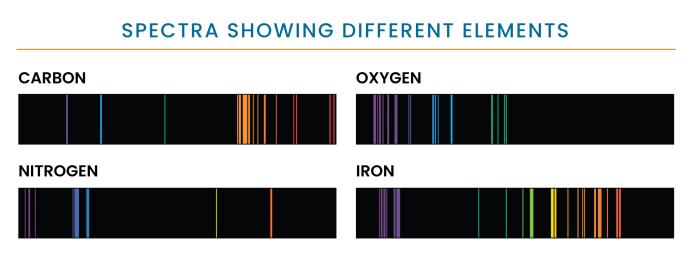 CreditThis work by NASA/STScI is licensed under Creative Commons Zero v1.0 Universal
CreditThis work by NASA/STScI is licensed under Creative Commons Zero v1.0 UniversalThis technique can measure the redshift of an object, telling us how far away it is.
Spectroscopy can tell us a lot about objects in space, but it takes a lot of work. For example, one spectroscopy measurement can take the same amount of time as 100 photometry measurements.
Spectroscopy also requires a lot of light, so it cannot be used on very faint objects.
